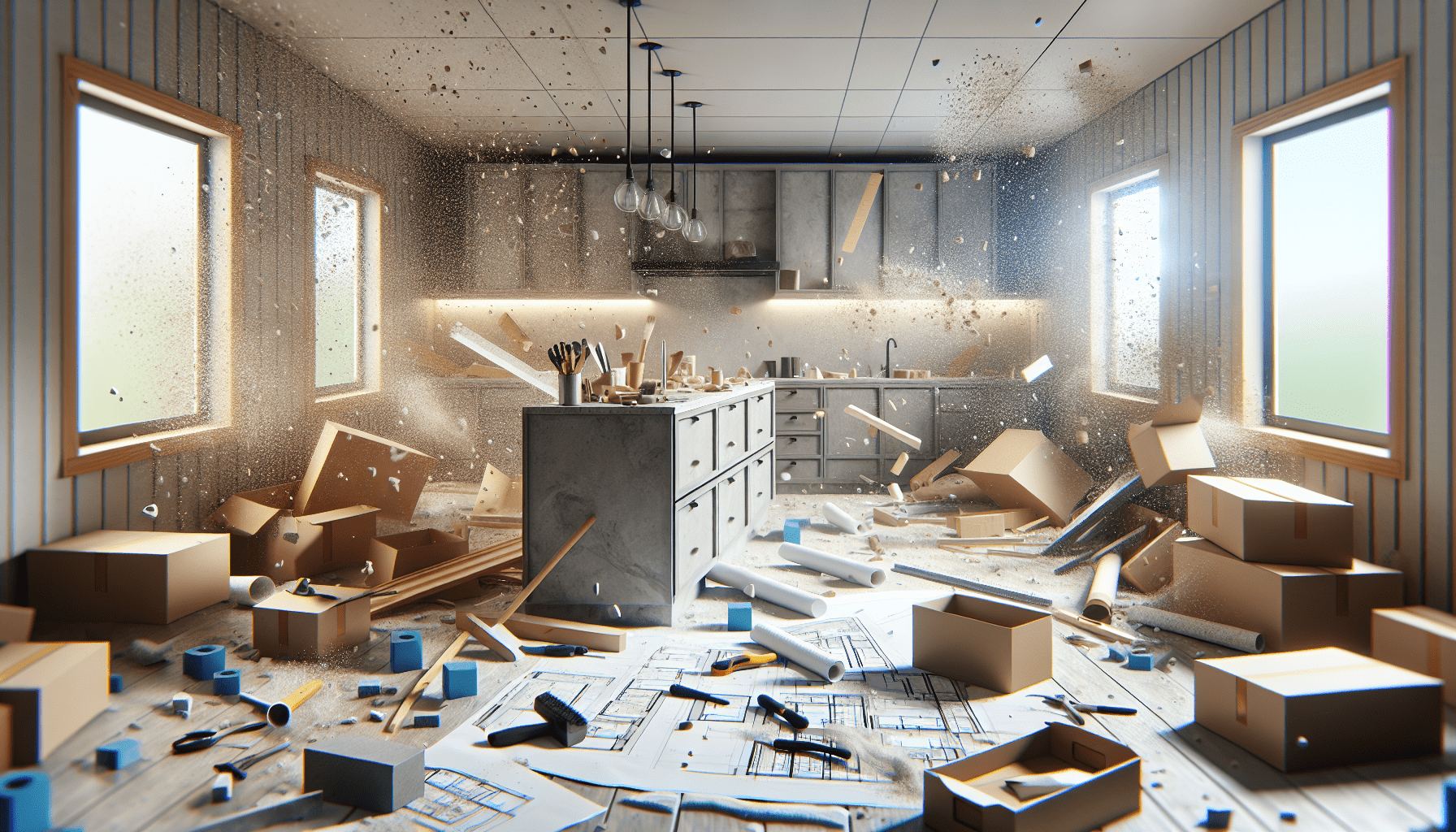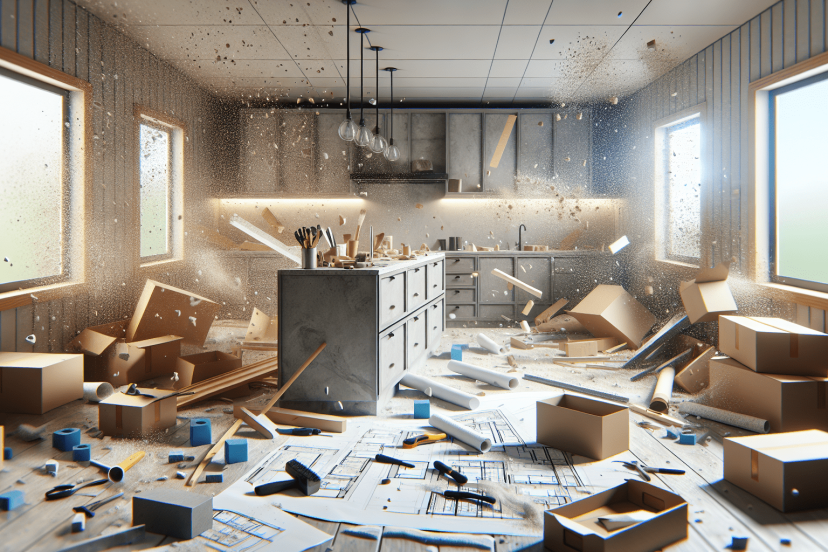How Messy Is Countertop Installation?
When it comes to countertop installation, the question on everyone’s mind is just how messy it can get. Whether you’re revamping your kitchen or updating your bathroom, the process of installing new countertops can seem daunting. But fear not! In this article, we’ll demystify the chaos and give you an insider’s look at what to expect during this exhilarating transformation. From dust and debris to the art of clean-up, we’ve got you covered on all things messy. So grab a cup of coffee, sit back, and let’s dig into the nitty-gritty of countertop installation.
Preparation
Before starting the countertop installation process, it’s crucial to properly prepare the area. Clearing the area of any items or objects that may obstruct the installation is the first step. Make sure to remove any decor, kitchenware, or small appliances that could potentially get in the way.
Once the area is clear, protecting the surrounding surfaces is essential to prevent any damage. Place drop cloths or protective sheets over nearby furniture, cabinets, and flooring to ensure they don’t get scratched or stained during the installation process.
Gathering the necessary tools and materials beforehand is also vital. Some common tools you may need include a tape measure, level, circular saw, power drill, and screwdriver. Additionally, make sure to have the appropriate countertop material, adhesive, and sealant ready for installation.
Demolition
Before starting the installation, it’s usually necessary to remove existing countertops. This can involve disconnecting plumbing fixtures, appliances, and removing any caulking or adhesive holding the countertops in place. It is important to exercise caution during this phase to avoid damaging the surrounding cabinets or walls.
Once the countertops are removed, disposing of the debris is essential for a clean and organized work area. Dispose of the countertops according to local regulations and guidelines. Properly disposing of debris not only helps maintain cleanliness but also ensures environmental responsibility.

Installation
After the demolition phase, it’s time to install the new countertops. Before placing the countertops, it’s crucial to ensure that the base cabinets are level. Use a level to confirm that the cabinets are perfectly aligned, making any necessary adjustments.
Cutting and fitting the countertops is the next step in the installation process. Depending on the material, this can involve using power tools such as a circular saw to make precise cuts. It’s important to measure carefully and double-check your measurements to avoid any costly mistakes.
Once the countertops are cut and fit properly, securing them to the cabinets is crucial for stability and longevity. Using screws or adhesive, attach the countertops securely to the base cabinets. Take your time during this step to ensure a secure and reliable attachment.
Cutting and Trimming
During the countertop installation process, cutting and trimming may be required to achieve the desired shape and size. Power tools like a circular saw or jigsaw are often used to cut and shape countertops.
Ensuring precise measurements and cuts is essential for a professional-looking finish. Utilize accurate measuring techniques and mark the countertop carefully before making any cuts. Taking your time and double-checking your measurements will help avoid unnecessary mistakes.

Sealing
Applying sealant to the countertops is an important step in preventing stains and water damage. Sealants create a protective barrier, enhancing the longevity of the countertop and making it more resistant to liquids and spills.
When applying a sealant, follow the manufacturer’s instructions carefully. Use a brush or roller to apply the sealant evenly, paying particular attention to seams and edges. After application, give the sealant adequate drying time to ensure its effectiveness.
Cleanup
Once the installation and sealing are complete, it’s time to clean up the work area. Clear away any construction debris, including discarded countertops, packaging materials, and other waste. Properly dispose of these materials according to local regulations.
Wiping down the countertops is the final step in achieving a clean and polished finish. Use a soft cloth or sponge and mild cleaning solution to remove any dust, dirt, or residue. Take extra care to ensure an immaculate finish that showcases the beauty of your new countertops.
Possible Mess
Countertop installation can generate some mess during the process. It’s essential to be prepared for potential dust, adhesive residue, and general construction debris that may accumulate.
During the demolition and cutting phase, dust may be produced, which can settle on nearby surfaces. Adhesive residue may also be present, requiring some cleaning and removal. Additionally, some dirt and debris may be brought in during the installation process.
Protective Measures
To minimize the mess during countertop installation, covering nearby furniture and surfaces is advised. Use drop cloths or protective sheets to shield furniture, cabinets, and the floor from dust, debris, and potential damage.
Using drop cloths and protective barriers can help contain the mess within the installation area, making cleanup more manageable. These measures not only protect your belongings but also contribute to a more organized and stress-free installation process.
Tips for Minimizing Mess
Working systematically and cleaning as you go is one effective way to minimize the mess during countertop installation. As you progress through each step, take the time to clean up any debris or dust that accumulates. This proactive approach can prevent the mess from becoming overwhelming.
Utilizing a dust extraction system can further help minimize dust and debris. These systems can capture dust right at the source, keeping the air cleaner and the work area neater. Be sure to follow safety guidelines and use appropriate protective gear when operating power tools and dust extraction systems.
Another tip for minimizing mess is to utilize plastic or cardboard barriers. These barriers can be placed strategically to contain dust and debris within the immediate work area, preventing it from spreading throughout the rest of the space.
Professional Installation
If the mess and complexity of countertop installation seem daunting, hiring skilled professionals is always an excellent option. Professional installers have the expertise and experience to handle the installation process efficiently and effectively.
By hiring professionals, you can minimize the mess while ensuring a high-quality outcome. They will have the necessary tools, skills, and techniques to complete the installation flawlessly, saving you time and effort.
In conclusion, countertop installation can be a messy process, but with proper preparation, protective measures, and attention to detail, the mess can be minimized. Whether you decide to tackle the installation yourself or hire professionals, following the tips mentioned will help ensure a clean, successful, and aesthetically pleasing countertop installation.




